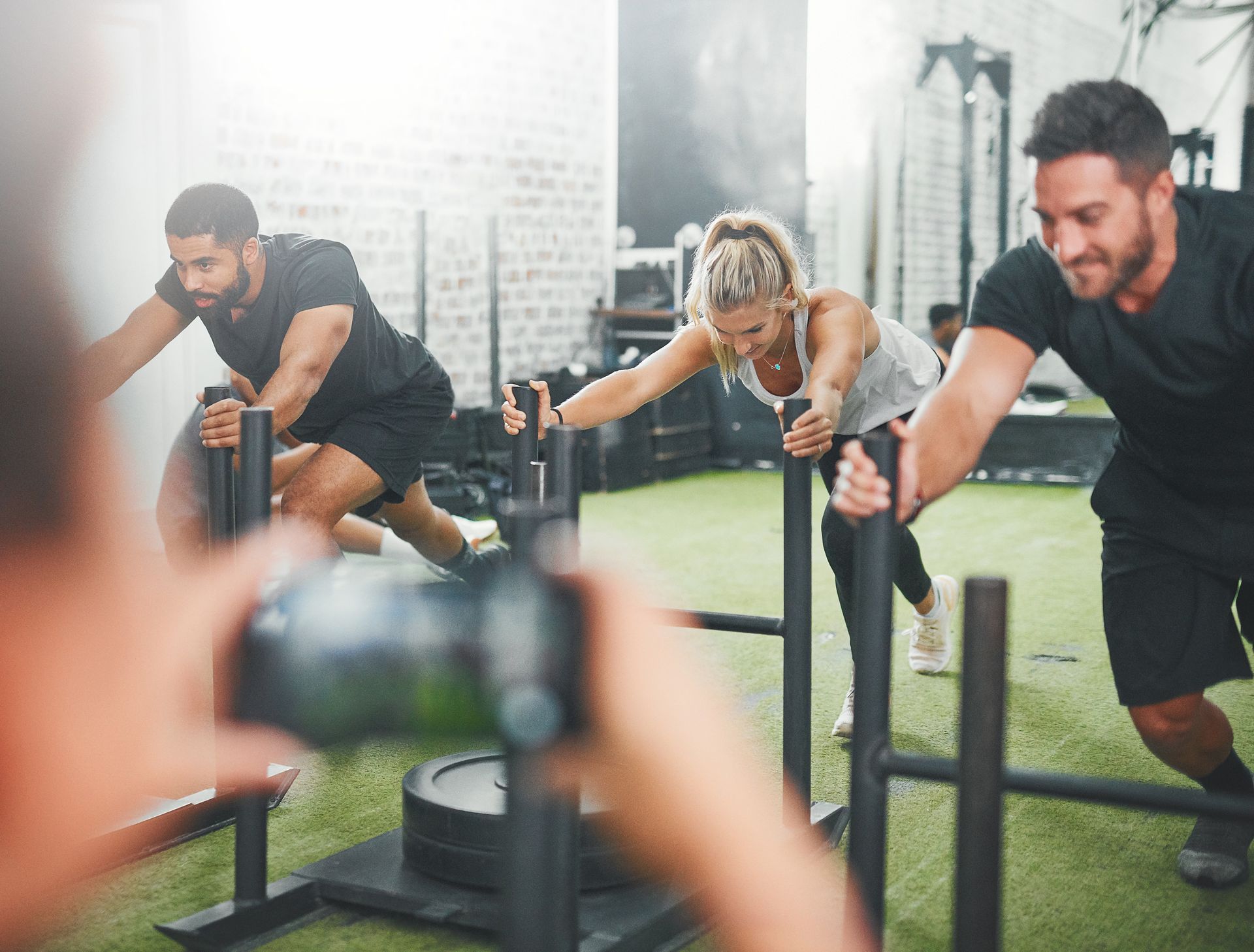By Mal Felix, IFBB Professional Bodybuilder
•
March 13, 2025
Introduction Starting your bodybuilding journey is an exciting time. The rush of lifting, the thrill of seeing progress, and the sheer drive to push yourself daily can be addicting. But with that excitement comes the risk of making mistakes that can slow progress, cause injury, or even lead to burnout. I know this because I’ve been there. Early in my career, I was too impulsive, chasing results without a proper plan, and I paid the price. Over time, I learned the value of studying those ahead of me—following professional bodybuilders, reading research, blogs, and engaging with seasoned athletes. Learning from others' mistakes was one of the smartest things I did, and I encourage you to do the same. Let’s go over the top 10 mistakes new bodybuilders make and how you can avoid them. ________________________________________ 1 . Skipping the Basics Why It’s a Mistake: Too many beginners overlook form and technique, focusing instead on moving the weight from point A to point B. I see it all the time—guys curling dumbbells too heavy, wrists bent back, no real bicep contraction happening. Poor form not only minimizes muscle activation but also increases the risk of injury. How to Avoid It: Master the basics first. Focus on proper form and full range of motion. It’s okay to start light. Spend time learning correct technique from credible sources—watch videos from professional bodybuilders, hire a knowledgeable coach, or ask experienced lifters for guidance. Perfect your compound lifts before jumping into advanced movements. Don’t let ego dictate your weights—progress methodically, and soon enough, you’ll be squatting 315 lbs with full control and range of motion. ________________________________________ 2. Neglecting Nutrition Why It’s a Mistake: Many new lifters think supplements can replace whole foods. Others either undereat and fail to grow or overeat on junk and gain unnecessary fat. Your diet is the foundation of your progress, and if it's not optimized, your performance in the gym will suffer. How to Avoid It: Whole food is king. My coach always told me, “Whole food is better,” and he was right. Supplements should only supplement what’s missing—not replace meals. Stick to a structured meal plan: at least 40g of protein 4-5 times a day, eating every 3-4 hours, and avoiding unnecessary snacking. Focus on lean proteins, complex carbohydrates, and healthy fats. Meal prep ahead of time to avoid making poor food choices in the moment. ________________________________________ 3. Overtraining Why It’s a Mistake: More isn’t always better. The gym is where you break down muscle; growth happens outside of it. Overtraining leads to fatigue, stalled progress, and even injury. If you don’t allow proper recovery time, you will hit a plateau or worse, experience burnout. How to Avoid It: Watch for signs like constant soreness, lack of motivation, and declining strength. Follow a structured training split that allows muscle groups adequate time to recover. Quality over quantity—train with intensity but give your body time to rest and grow. ________________________________________ 4. Ignoring Recovery Why It’s a Mistake: If you’re constantly sore or fatigued 2-3 days after a workout, you’re not recovering properly. Poor sleep and skipping rest days can destroy progress. Many lifters don’t realize that muscle growth occurs during recovery, not during the workout itself. How to Avoid It: Sleep at least 7-9 hours per night. Prioritize quality sleep by limiting screen time before bed, keeping a consistent sleep schedule, and optimizing your sleeping environment. Incorporate active recovery techniques like stretching, foam rolling, and mobility exercises. Listen to your body—if it’s telling you to take a rest day, take it. Recovery is when muscles actually grow. ________________________________________ 5. Not Tracking Progress Why It’s a Mistake: If you’re not tracking your lifts, weight, or body composition, you’re guessing your progress. Many lifters get frustrated when they don’t see immediate changes, but without tracking, they have no reference point to measure improvement. How to Avoid It: Keep a log of your workouts and measurements. Track strength gains, body weight, and even how you feel. Take progress photos every few weeks. Small improvements over time lead to big results, and having data allows you to make informed adjustments to your training and nutrition. ________________________________________ 6. Being Impatient Why It’s a Mistake: Unrealistic expectations lead to frustration. I’ve seen too many people quit because they didn’t get a six-pack in three months. Progress takes time, and trying to rush it often leads to extreme dieting, overtraining, or even giving up altogether. How to Avoid It: Set S.M.A.R.T. goals (Specific, Measurable, Achievable, Relevant, Time-bound). Understand that bodybuilding is a marathon, not a sprint. Stay consistent, and the results will come. Trust the process and enjoy the journey. ________________________________________ 7. Avoiding Compound Movements Why It’s a Mistake: Isolation exercises have their place, but if you’re skipping squats, deadlifts, and bench press, you’re missing out on serious gains. Compound lifts activate multiple muscle groups, leading to greater overall muscle development and strength gains. How to Avoid It: Get comfortable being uncomfortable. Master the big lifts. They build strength, size, and overall athleticism like nothing else. Don’t let fear or lack of confidence keep you from incorporating these movements into your routine. ________________________________________ 8. Focusing Solely on Aesthetics Why It’s a Mistake: Bodybuilding isn’t just about looking good in the mirror. Strength, mobility, and overall health matter just as much. Many new lifters prioritize appearance over performance, which can lead to imbalances and weaknesses. How to Avoid It: Stop spending half your gym time posing. Train for performance, function, and longevity. A great physique is a byproduct of smart training and discipline. Incorporate mobility work and functional training into your routine to ensure long-term success. ________________________________________ 9. Following Fad Workouts or Diets Why It’s a Mistake: Every year, new diet and workout fads pop up promising quick fixes. Truth is, the best plan is the one you’ll stick to. Constantly switching programs prevents you from making real progress. How to Avoid It: Stick to the basics. Look at the physiques from the ‘60s, ‘70s, and ‘80s—those guys built legendary bodies with time-tested methods. Focus on progressive overload, consistent nutrition, and recovery. History proves what works. ________________________________________ 10. Neglecting Mental Health Why It’s a Mistake: Bodybuilding is as much a mental game as it is a physical one. Burnout, self-doubt, and stress can derail progress. If you’re not mentally strong, setbacks will hit harder and motivation will fade. How to Avoid It: Develop mental resilience. Set goals, manage stress, and keep a healthy balance. Surround yourself with a supportive community, practice self-discipline, and remind yourself why you started. Your mindset will determine your success just as much as your training and nutrition. ________________________________________ Conclusion Bodybuilding is a journey of discipline, patience, and learning. Avoid these common mistakes, stay consistent, and focus on gradual, sustainable progress. Trust me—if you put in the work smartly and consistently, you will see results. Keep grinding! rent source .




